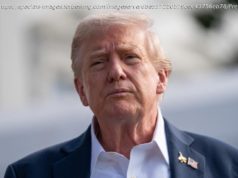No real improvement in the trade tensions between the U. S. and China is expected until after mid-term elections.
No real improvement in the trade tensions between the U. S. and China is expected until after mid-term elections.
Even with U. S. officials seeking talks with China, President Donald Trump reportedly wants to put tariffs on $200 billion in Chinese goods, and has told aides to go ahead with them, according to Bloomberg, quoting unnamed sources. Treasury Secretary Steven Mnuchin is spearheading the effort to reignite talks.
The White House said later Friday that the administration will continue to take action on trade and it encouraged China to address U. S. concerns.
«Our view has been consistent that trade policy is improving and Trump is trying to isolate China by cutting deals on NAFTA and with the EU,» notes Dan Clifton, head of policy strategy at Strategas. «Even with China and the US, we see some cracks that can lead to negotiations. But there has not been enough pain for structural reforms to be agreed to. We don’t believe real discussions will start until after the midterm elections and we anticipate the next round of tariffs will come into effect later this month.»
Stocks sold off on the initial report from Bloomberg Friday afternoon about Trump’s desire to move ahead, but the market later stabilized.
Policy experts have said they don’t expect any positive movement on trade before the election because the Chinese will want to see how Republicans, and Trump by extension, fare in Congressional mid-terms. The GOP is expected to lose control of the House of Representatives but maintain the Senate, though that looks slightly less certain than it had.
«I don’ see the Trump stuff as new. It’s Mnuchin, and the Treasury does not negotiate trade… Is there really a doubt that he’s going to put the tariffs on before the election? The question is will he put them on before the meeting,» said Marc Chandler, head of fixed income strategy at Brown Brothers Harriman, noting there is a G-20 meeting at the end of November.
«That’s the first and best opportunity for an agreement,» Chandler said. «I think Trump hopes to have some success but Canada’s still balking. Nothing’s really changed.»
Financial markets have been skittish about trade threats, said Gary Hufbauer, senior fellow at Peterson Institute for International Economics. «They risk triggering a shock prior to the November election.» Hufbauer said for that reason, the administration could wait until after the election to move on its next round of tariffs.
The tariffs on $200 billion in Chinese imports have been ready to go after a comment period ended last week. Trump also threatened even more tariffs, on another $267 billion in goods. Last week, a number of companies, including Apple and Intel, complained that tariffs would hurt business and result in higher prices.
«I think that I’m not expecting any big breakthroughs. I think what the administration is looking for is some immediate concessions,» said Hufbauer. He said the Chinese could make concessions by ending tariffs on key agricultural products, like soybeans and pork, and end the requirement for technology companies to form joint ventures if they want to operate in China.
«That would be a fast deliverable. They decided they would start a charm offensive with U. S. companies, be nice to them instead of beating up on them. An extension of that could be to relax compulsory joint venture arrangements,» he said.
The last meeting between U. S. and Chinese officials was last month and was led by David Malpass, the Treasury undersecretary for international affairs.






